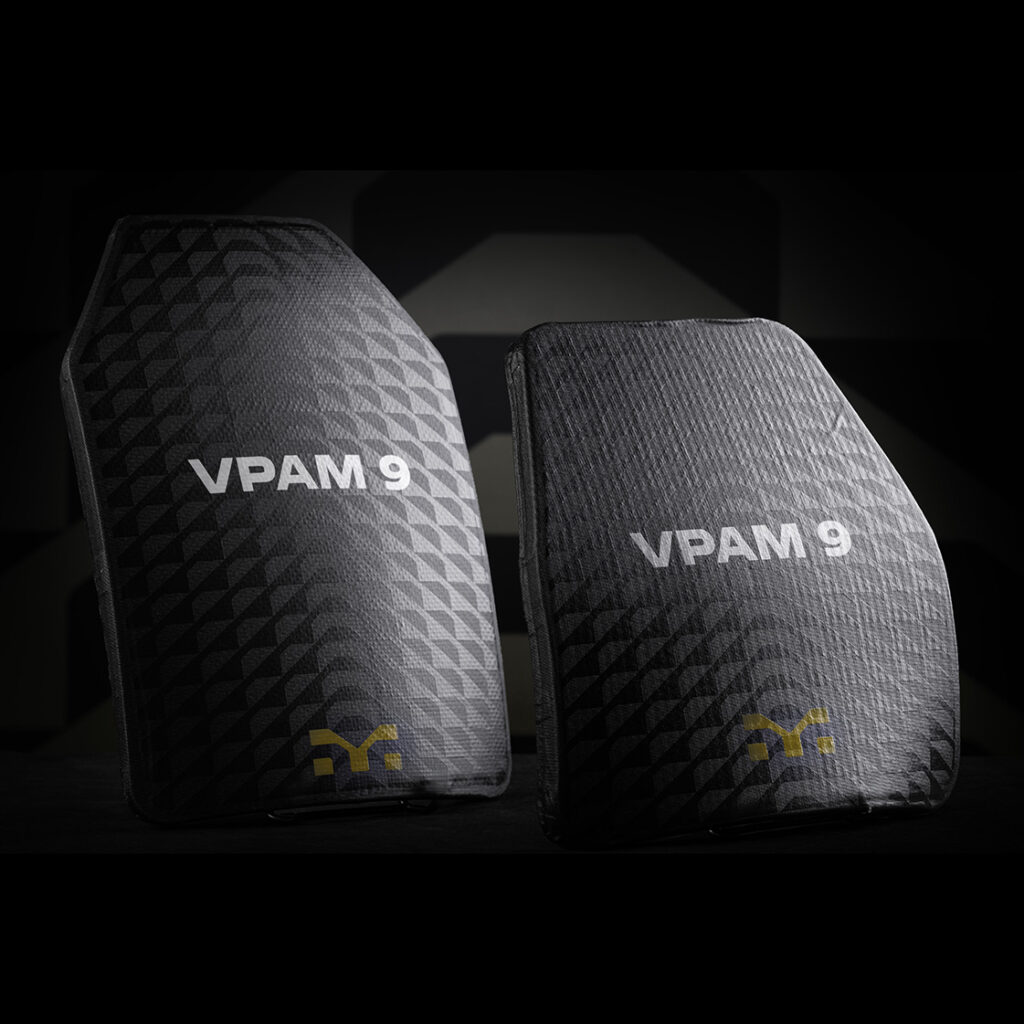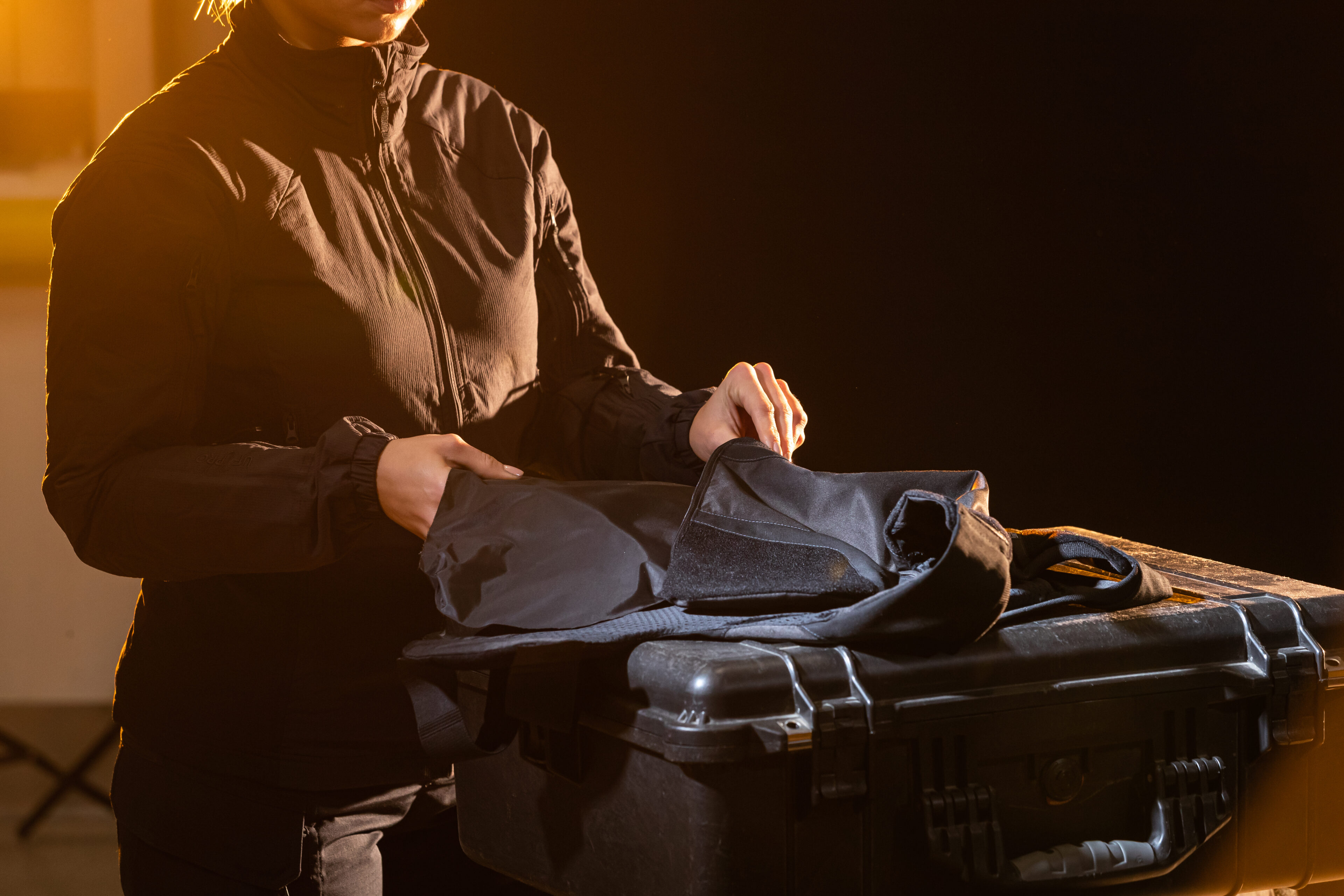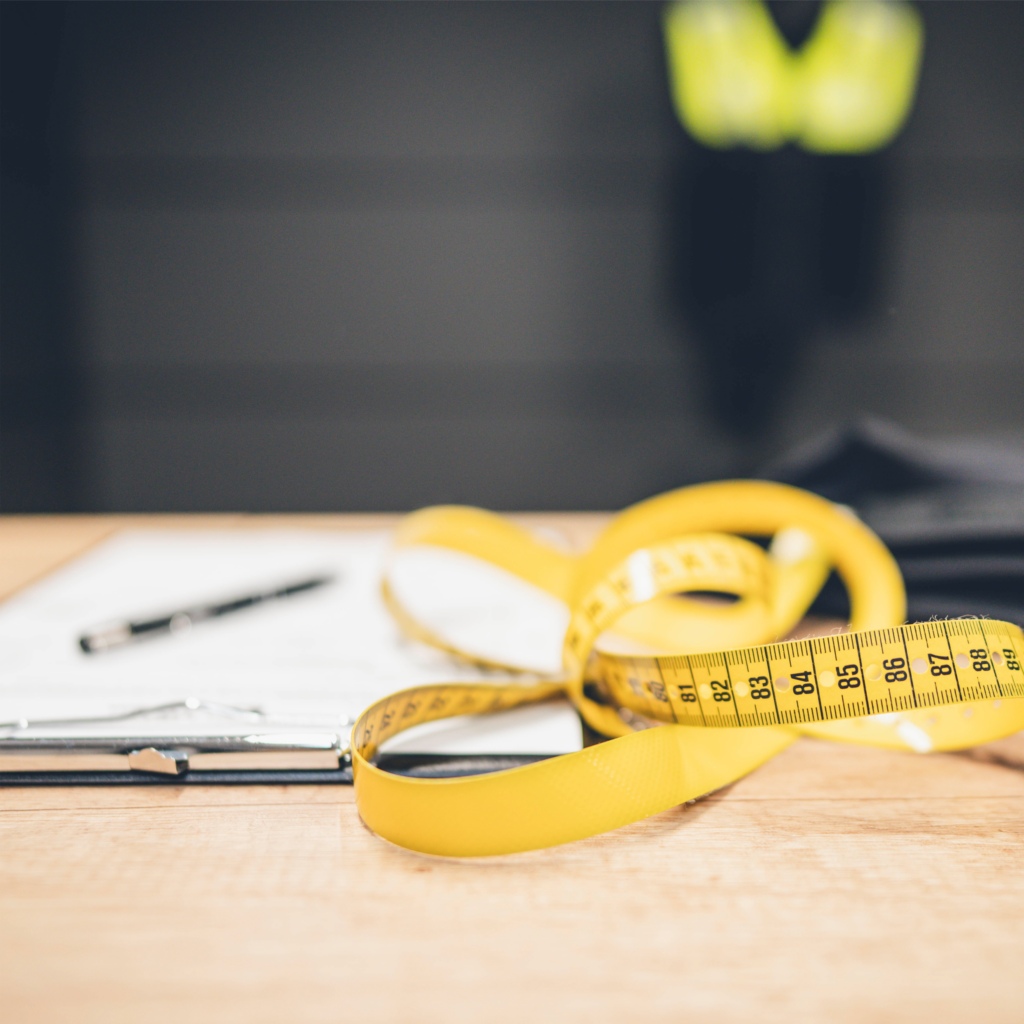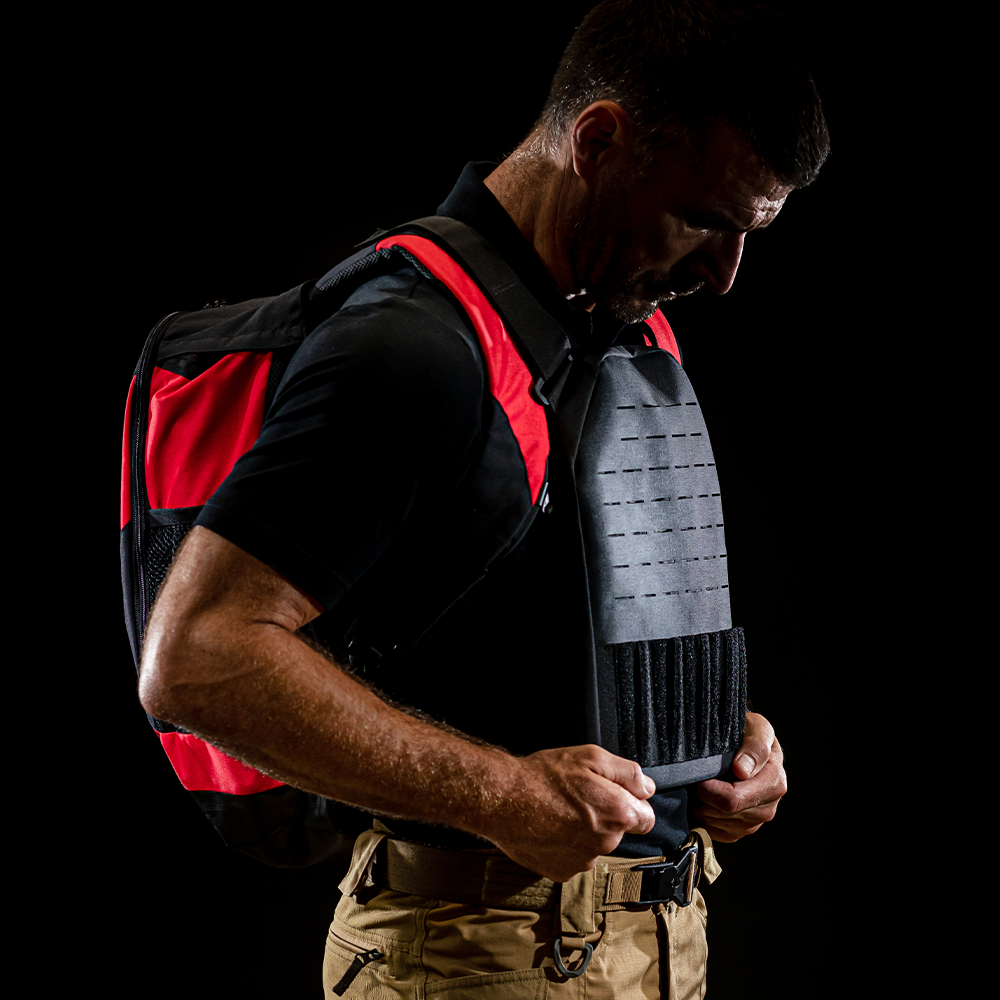
Update of the US standard NIJ 0101.07
Protective vests are used by security forces, the police and increasingly by private individuals for protection against various threat scenarios. In the United States, the National Institute of Justice (NIJ) sets the standards that determine the effectiveness of body armour. To meet the current demands of changing threat scenarios and technological developments, the NIJ standard was updated to 0101.07 in November 2023 and the new standard 0123.00 was introduced. The first certified protective vests are expected to be available in spring 2025. In this blog post we will look at the main changes and their significance.
The importance of the NIJ standard
The National Institute of Justice (NIJ) is the research and evaluation agency of the U.S. Department of Justice. The NIJ standard, which was developed by the National Institute of Justice and introduced in the 1970s, defines different levels of protection to indicate the types of threat that body armour can repel, from hand guns (HG) to rifles (RF). Although the standard was originally developed by the NIJ to protect police officers in the United States, it is being adopted by many other countries as the international benchmark for body armour.
Since its introduction, the standard has been regularly revised to take account of new types of weapons, ammunition and user requirements. The latest update, published on 29 November 2023, is a response to the changing threat landscape and advances in materials technology. For security personnel, the stricter requirements of the updated standard mean greater reliability and safety in the field.
Timetable for introduction
- Published (29 November 2023): Standards 0101.07 and 0123.00 have been officially released.
- Transition phase: The NIJ Compliance Testing Program (CTP) announced that it would no longer be accepting new applications for certification under the old 0101.06 standard as of 5 January 2024. However, any existing models submitted before this date remained certifiable according to 0101.06.
- Start of tests according to 0101.07: The CTP started accepting new applications for tests under the 0101.07 standard in 2024. However, the actual tests in NIJ-approved laboratories did not commence until later in the year (around November 2024), with the first certifications due by spring 2025.
- Phased implementation: The old 0101.06 standard will remain valid until at least the end of 2027 to ensure a smooth transition for authorities and manufacturers. This means that body armour certified to 0101.06 will continue to be recognised, while new models will be certified to 0101.07.
The key changes in NIJ standard 0101.07
Advanced test methods for modern ammunition:
The test protocols have been adapted due to the proliferation of high-velocity ammunition and special projectiles (e.g. armour-piercing or hollow-point projectiles). The new standard now takes account of a greater variety of calibres and bullet types to reflect their increased prevalence in real-life scenarios.
Integration of stab and slash protection:
While earlier standards focused primarily on ballistic protection, the update places greater emphasis on combined threats. Body armour can now optionally be tested against stabbing attacks and other close-combat weapons, which is particularly relevant for police forces in urban areas.
Improved requirements for durability and wearing comfort:
New materials such as ultra-light ceramics and flexible composites have transformed the market. The updated standard requires body armour to be not only safe, but also durable and ergonomic. Tests must therefore be carried out for ageing, moisture resistance and flexibility under extreme conditions.
Introduction of a ’threat level’ for special scenarios:
A new category has been introduced that focuses on specific threats, such as shrapnel or improvised explosive devices (IEDs). This change reflects the increasing relevance of such threats in conflict zones.
Sustainability and recycling:
For the first time, guidelines have been provided on the durability and environmental compatibility of materials. Manufacturers must now demonstrate that their products are not only safe but durable, and that they can be disposed of responsibly at the end of their life cycle.
A tougher certification process:
With a view to ensuring quality, the certification process has been tightened up. Products are now being more regularly retested on the market to ensure they continue to meet the requirements after approval.
New threat levels and terminology
NIJ standard 0101.07 introduces a new nomenclature for a clearer and more precise description of threats. The previous protection levels (e.g. II, IIIA, III, IV) have been replaced by a more detailed classification that distinguishes between HG and RF threats. These threat levels are now specified in a separate document, NIJ standard 0123.00, which defines the specific test ammunition and velocities. The new terminology is intended to reduce confusion and make it easier to assign protective vests to real threats. The levels are:
- HG1 and HG2: Protection against hand guns.
- RF1, RF2 and RF3: Protection against rifles, with RF2 as a new intermediate level.
This approach allows for more flexible adaptation to new threats without having to constantly revise the main 0101.07 standard.

Threat levels for hand guns
The threat levels for small arms have been revised to better reflect the performance of bulletproof vests against modern small arms ammunition. The technical requirements are as follows:
NIJ HG1 (formerly Level II):
Test ammunition:
- 9 mm FMJ RN (full metal jacket, round nose) weighing 8.0 g (124 grain) and with a velocity of 398 m/s ± 9.1 m/s.
- .357 Magnum JSP (jacketed soft point) weighing 10.2 g (158 grain) and with a velocity of 436 m/s ± 9.1 m/s.
Technical features:
HG1 is designed for lightweight, concealed vests and provides protection against common pistol ammunition. The test velocities are slightly higher than in the previous standard to reflect the increased requirements.
Objective:
Protection against typical everyday threats faced by law enforcement personnel in lower risk areas.
NIJ HG2 (formerly Level IIIA):
Test ammunition:
- 9 mm FMJ RN weighing 8.0 g (124 grain) and with a velocity of 448 m/s ± 9.1 m/s (faster than HG1).
- .44 Magnum SJHP (semi-jacketed hollow point) weighing 15.6 g (240 grain) and with a velocity of 436 m/s ± 9.1 m/s.
Technical features:
HG2 replaces the former .357 SIG FMJ flat nose ammunition with faster 9 mm RN projectiles, making the test conditions more stringent. It is the highest level for soft ballistics, providing protection against virtually all common small arms threats, including heavier calibres such as .44 Magnum.
Objective:
The tests also include perforation-backface deformation (P-BFD) testing, where backface deformation (trauma) is limited to a maximum of 44 mm to minimise blunt force injuries.
Rifle threat levels
RF threat levels have been significantly expanded to reflect the increased prevalence of rifles in the United States. The standard introduces three levels, including the completely new category of RF2:
NIJ RF1 (formerly Level III):
Test ammunition:
- 7.62×51 mm M80 NATO (FMJ, steel jacket) weighing 9.6 g (147 grain) and with a velocity of 847 m/s ± 9.1 m/s.
- 5.56×45 mm M193 weighing 3.6 g (55 grain) and with a velocity of 3,250 ft/s (approx. 990 m/s).
- 7.62×39 mm MSC (mild steel core) weighing 7.8 g (120.5 grain) and with a velocity of 2,400 ft/s (approx. 732 m/s).
Technical features:
RF1 covers typical rifle threats, including lighter 5.56 mm ammunition and the widely used 7.62×39 mm from AK-47 platforms. The tests are carried out on hard armour plates in a conditioned state (e.g. after submersion in a water bath) to simulate real environmental conditions.
Objective:
To provide protection against the kind of standard rifle ammunition that is commonly encountered.
NIJ RF2 (newly launched):
Test ammunition:
All RF1 threats plus 5.56×45 mm M855 green tip weighing 4.0 g (62 grain) and with a velocity of 950 m/s ± 9.1 m/s.
Technical features:
RF2 is an intermediate level that has been introduced in response to the growing threat of highly penetrative ammunition, such as the M855 with steel core. This ammunition is known for its ability to penetrate soft armour, which is why RF2 often requires hard armour plates.
Objective:
To protect personnel who are exposed to an increased risk from military-grade or modified rifles.
NIJ RF3 (formerly Level IV):
Test ammunition:
30.06 M2 AP (armour-piercing) weighing 10.8 g (166 grain) and with a velocity of 878 m/s ± 9.1 m/s.
Technical features:
RF3 remains the highest protection level and is specially designed for armour-piercing ammunition. The test consists of a single shot, as the penetration force is extremely high. RF3 plates are typically heavier and less flexible.
Objective:
To provide maximum protection for the most serious threat scenarios, e.g. military or terrorist attacks.
To enable better identification of weak spots, the RF levels have been supplemented by additional test methods, such as shots on the ‘crown’ of curved plates and edge shots.
Protective equipment for women
One of the key advances in NIJ standard 0101.07 is the improvement of testing methods for soft body armour designed specifically for women. Previous standards did not take sufficient account of anatomical differences, often resulting in a poor fit and less protection. The new features include:
Specific test protocols:
- An additional shot has been introduced as part of the P-BFD test, which is fired at the top centre of the armour at a 45° angle. This simulates hits in critical areas where women are particularly vulnerable due to their breast anatomy.
- The test forms (‘torsos’) have been adapted to more accurately represent female anatomy, including breast contours.
Technical requirements:
- The protective equipment must be flexible enough to adapt to the body shape without compromising ballistic protection. This often demands the use of advanced materials, such as high-strength fibres (e.g. Kevlar or Dyneema).
- The maximum backface deformation remains at 44 mm, but the tests ensure that protection is guaranteed even in the case of oblique hits.
Objective: The aim is to improve comfort and safety for female personnel, more and more of whom are assuming roles in security-related professions. A better fit reduces movement restrictions and increases the acceptance of the equipment.

Summary
The update to NIJ standard 0101.07 reflects the need for body armour to be adapted the latest threats and user requirements. The new threat levels of HG1, HG2, RF1, RF2 and RF3 enable more precise classification, while the revised test methods – especially for women – increase the practicality and safety of the body armour. These technical improvements present manufacturers with new challenges, but promise to make body armour significantly more reliable and effective in the field.
For wearers, the update means greater safety and increased comfort. Personnel who wear body armour every day particularly stand to benefit from the ergonomic improvements. At the same time, the more stringent requirements could lead to a slight increase in the cost of certified body armour. This could be a factor to consider for buyers, whether public authorities or private citizens.
For manufacturers, the update represents both a challenge and an opportunity. Companies that develop innovative materials and designs could gain a competitive advantage. At the same time, they will need to invest in research and development to meet the new standards.
Sources
- Ballistic Resistance of Body Armor, NIJ Standard 0101.07 – version of October 2023: Ballistic Resistance of Body Armor, NIJ Standard 0101.07 | National Institute of Justice
- Specification for NIJ Ballistic Protection Levels and Associated Test Threats, NIJ Standard 0123.00 – version of October 2023: NIJ Standard 0123.00 – NIJ Ballistic Protection Levels and Test Threats – 2881
Images and graphics: Mehler Protection, Mehler Vario System GmbH (all rights reserved, 2025)

